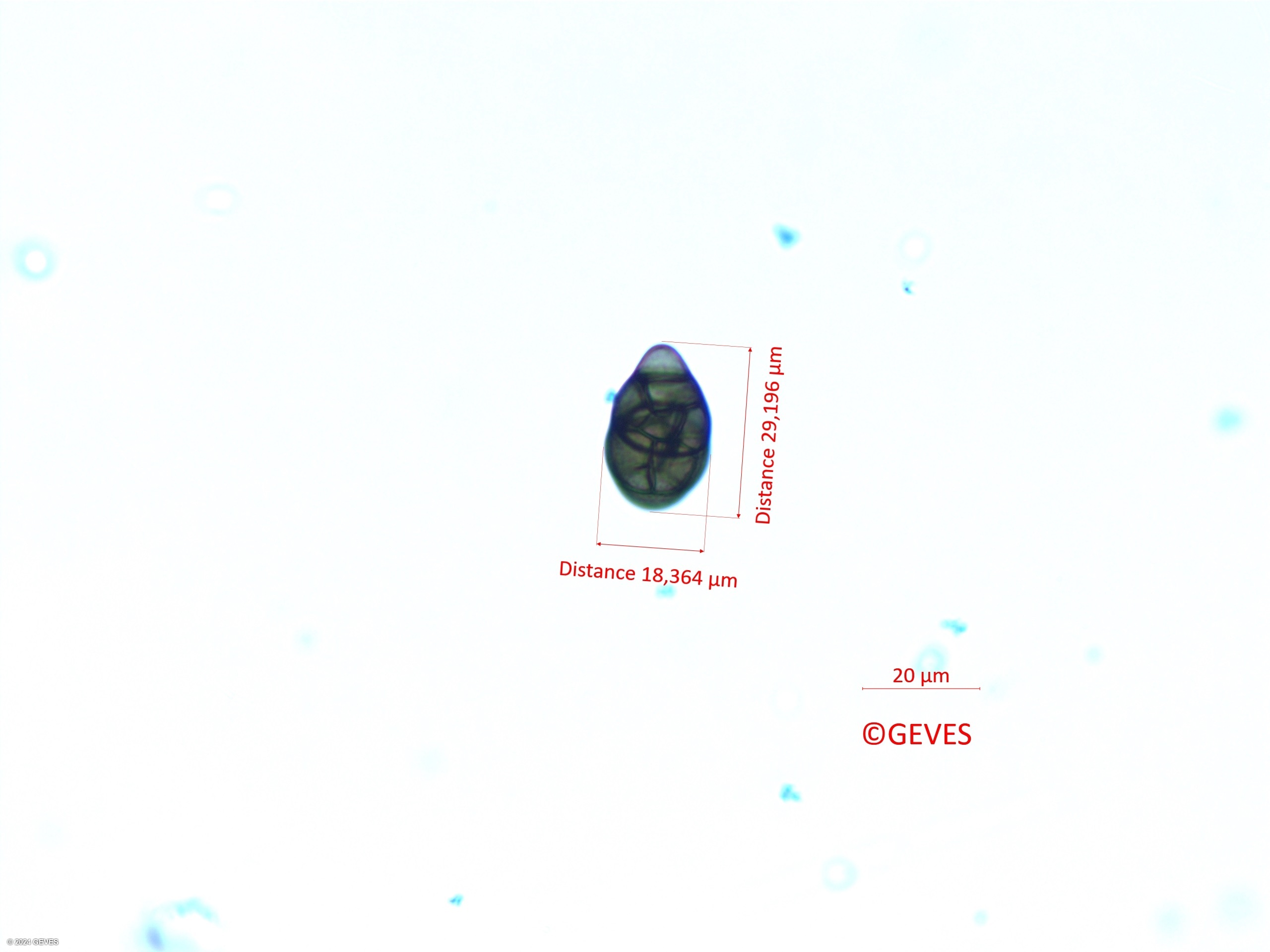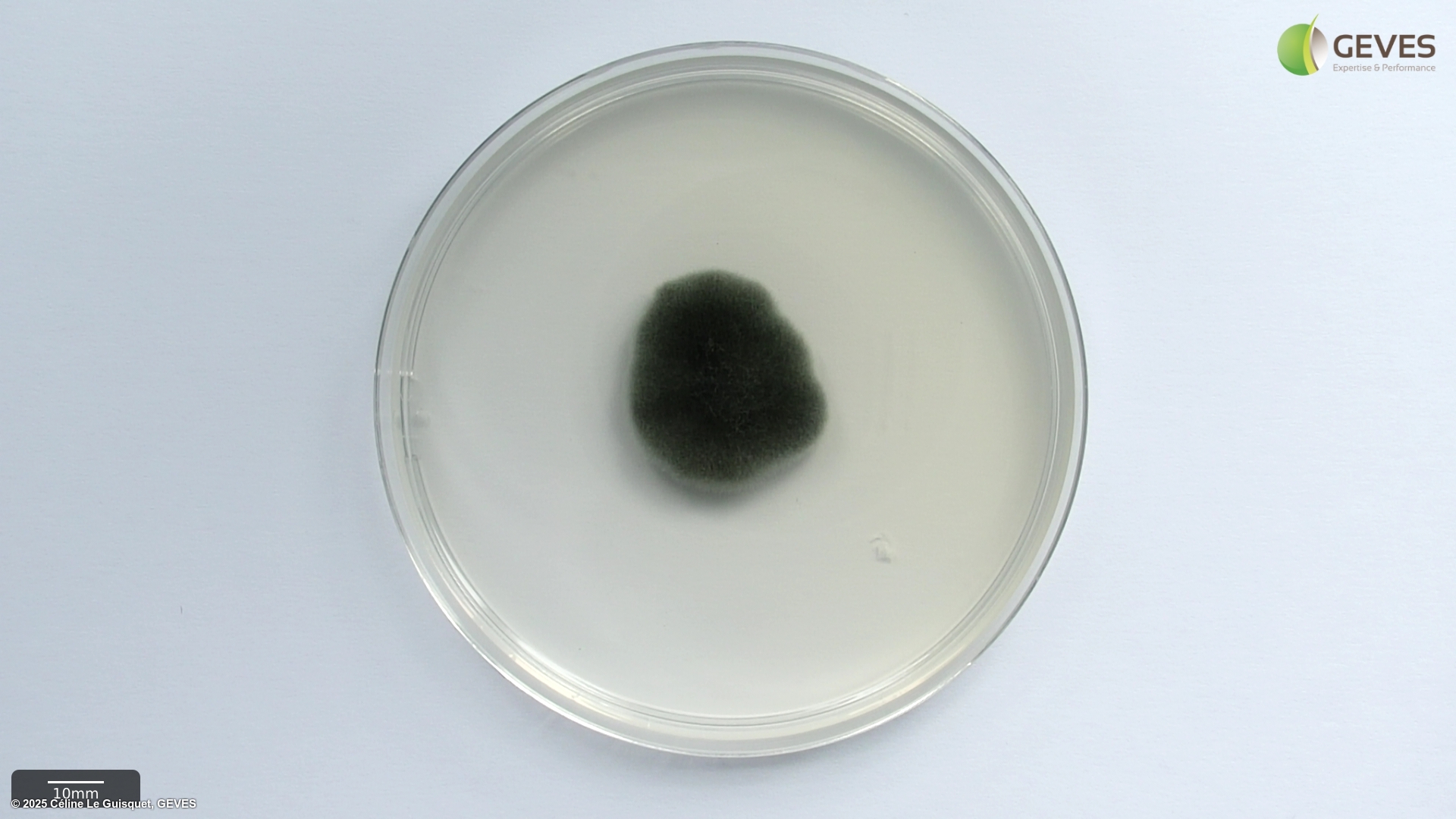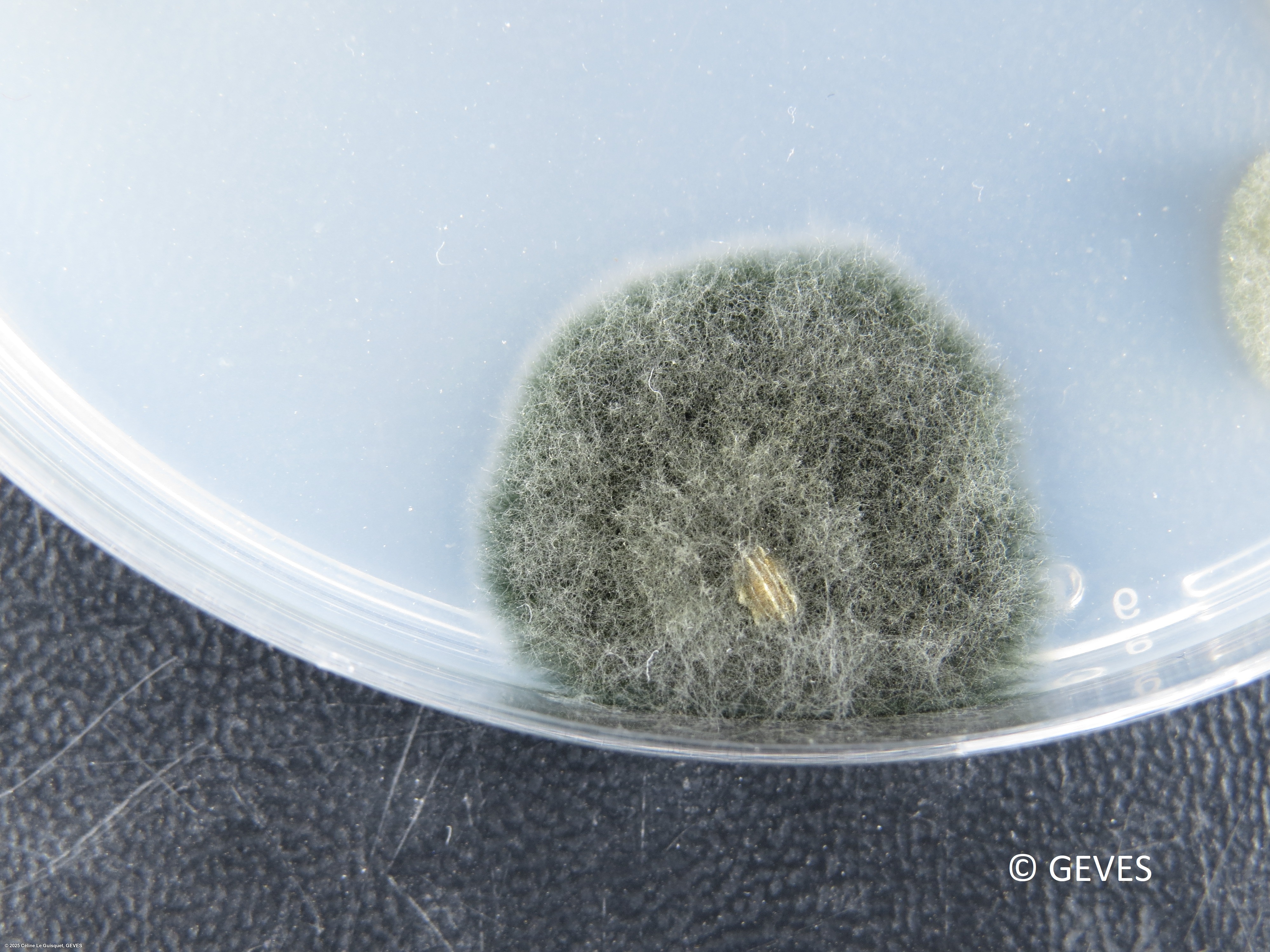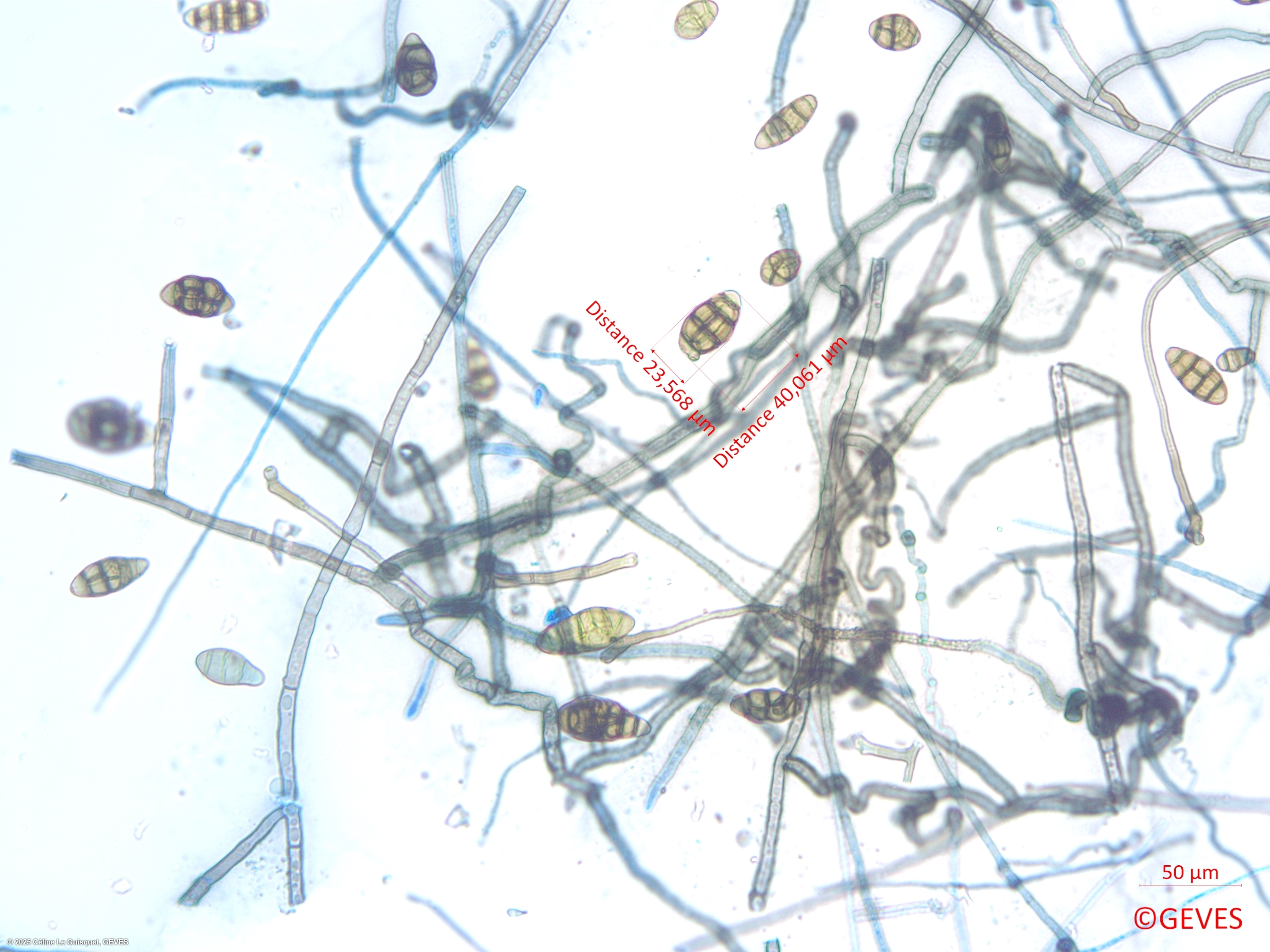Alternaria radicina
Overview
|
Scientific name
|
Alternaria radicina |
|
Genus
|
Alternaria |
|
EPPO code
|
ALTERA |
|
Common name
|
Carrot black rot |
|
Synonyms
|
Stemphylium radicinum |
Description
From ISTA's 7-002b Method:
After 6 days of growth in an appropriate chamber, examine seeds for conidiophores that are simple, or occasionally branched, arising usually singly from the surface of the seed, on the emerging radicle or on aerial mycelium. Conidia are produced singly or in chains of 2 or rarely 3, ellipsoidal or barrel shaped, with little evidence of beak, up to 75 um long, olivaeceous brown (Ellis, 1971). Under the stereoscopic microscope, conidia appear blackish and glossy.
From ISTA's Common Laboratory Seed Health Testing Methods for Detecting Fungi:
The fungus produces greyish, fluffy mycelium in which black, shiny conidia, single or in pairs, rarely in short chains, are seen on the conidiophores.
Conidia, highly variable in shape, often ellipsoidal, obclavate or ovoid, pale to dark brown, some smooth, some with constrictions at septa, 3-7 transverse and one or several longitudinal or oblique septa, 27-57 x 9-27μm.



